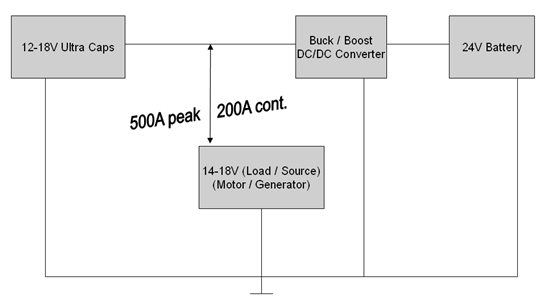Dear Sirs / Madams,
We'd like to find out whether TI offers an integrated circuit that allows us to build a DC/DC converter for both directions (buck direction from 9-18V --> 24V, and Boost from 18-24V ----> 9-18V). It's an application where both sides of the converter will be battery powered.
The low-voltage side will be powered by a 12V battery system but this side also offers up to 200A (@18V) for short periods (buck mode request) which should be used to load the 24V system....
The high-voltage side will be powered by a 24V battery and has to support the low-voltage side with up to 18V / 500A for very short periods only 500ms-1sec (boost mode request). Mostly the high-voltage side will boost the lower side with a max of. 200A (@14V) which should be realized for a longer period or almost continuously.
We're not afraid of "stacking" or putting many devices in parallel.
Thanks for your appreciated suggestions!



